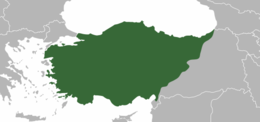APARTMENT FOR SALE WITH MAGNIFICENT VIEWS ON THE ANATOLIAN SIDE OF ISTANBUL
- City: ISTANBUL PROPERTY
- Property type: Apartment
- Bedrooms: 1
- Offer type: For Sale
- Neighborhood: Kadıköy
- Bathrooms: 1
- Property size: 55 m²
- Property ID: 15912
Features
- ATM
- Broadband Internet
- Cafe
- Car Park
- Dishwasher
- Garden
- Gym
- Kitchen
- Lift
- Luxury Property
- Reception services
- Restaurant
- Sauna
- Security System
- Swimming Pool
- WiFi
Details
APARTMENT FOR SALE WITH MAGNIFICENT VIEWS ON THE ANATOLIAN SIDE OF ISTANBUL
View Opportunity For Sale
Consisting of 603 residences, the project consists of 3 blocks. In the project where 1 + 1, 2 + 1, 3 + 1 and 4 + 1 apartments are located
1 + 1 from 52 square meters to 72 square meters,
2 + 1 from 90 square meters to 135 square meters,
3 + 1 from 168 square meters to 180 square meters,
There are 4 + 1 apartment options from 216 square meters to 246 square meters.
There are also 17 commercial units varying between 200 square meters and 1,000 square meters.
The project, which is close to the metro and metrobus line with its location, includes an indoor and outdoor swimming pool, fitness center, sauna and children’s playgrounds as social facilities.
Project Features
Outdoor swimming pool
• Indoor swimming pool
Children’s playgrounds
• Sauna
Fitness center
• Security
• Parking Garage
• Social facility
Building Features
• Elevator
Construction Techniques
• Building inspection has been done
• Ground survey done
• Compliant with earthquake regulations
• Compliant with the insulation regulation
ANATOLIA
Anatolia
Jump to navigationJump to search
|
Native name: Anadolu, Άνατολή
|
|
|---|---|

One definition of Anatolia within modern Turkey, excluding most of the Southeastern and Eastern Anatolia Regions.[1][2] Other definitions are coterminous with Turkey’s eastern and southern borders.
|
|
| Etymology | “the East”, from Greek |
| Geography | |
| Location | |
| Coordinates | 39°N 35°ECoordinates: 39°N 35°E |
| Area | 756,000 km2 (292,000 sq mi)[3] (incl. Southeastern and Eastern Anatolia Region) |
| Administration | |
|
Turkey
|
|
| Largest city | Ankara (pop. 5,700,000[4]) |
| Demographics | |
| Demonym | Anatolian |
| Languages | Turkish, Kurdish, Armenian, Greek, Kabardian, North Caucasian languages, various others |
| Ethnic groups | Turks, Kurds, Armenians, Chechens, Circassians, Greeks, Laz, various others |
| Additional information | |
| Time zone | |
Anatolia,[a] also known as Asia Minor, is a large peninsula in Western Asia and the westernmost protrusion of the Asian continent. It constitutes the major part of modern-day Turkey. The region is bounded by the Turkish Straits to the northwest, the Black Sea to the north, the Armenian Highlands to the east, the Mediterranean Sea to the south, and the Aegean Sea to the west. The Sea of Marmara forms a connection between the Black and Aegean seas through the Bosporus and Dardanelles straits and separates Anatolia from Thrace on the Balkan peninsula of Southeast Europe.
The eastern border of Anatolia has been held to be a line between the Gulf of Alexandretta and the Black Sea, bounded by the Armenian Highlands to the east and Mesopotamia to the southeast. By this definition Anatolia comprises approximately the western two-thirds of the Asian part of Turkey. Today, Anatolia is sometimes considered to be synonymous with Asian Turkey, thereby including the western part of the Armenian Highlands and northern Mesopotamia[5] and making its eastern and southern borders coterminous with Turkey’s borders.[6][7][8]
The ancient Anatolian peoples spoke the now-extinct Anatolian languages of the Indo-European language family, which were largely replaced by the Greek language during classical antiquity as well as during the Hellenistic, Roman, and Byzantine periods. The major Anatolian languages included Hittite, Luwian, and Lydian, while other, poorly attested local languages included Phrygian and Mysian. Hurro-Urartian languages were spoken in the southeastern kingdom of Mitanni, while Galatian, a Celtic language, was spoken in Galatia, central Anatolia. The Turkification of Anatolia began under the rule of the Seljuk Empire in the late 11th century and it continued under the rule of the Ottoman Empire between the late 13th and the early 20th century and it has continued under the rule of today’s Republic of Turkey. However, various non-Turkic languages continue to be spoken by minorities in Anatolia today, including Kurdish, Neo-Aramaic, Armenian, North Caucasian languages, Laz, Georgian and Greek. Other ancient peoples in the region included Galatians, Hurrians, Assyrians, Hattians, Cimmerians, as well as Ionian, Dorian, and Aeolic Greeks.
- ID: 15912
- Published: May 1, 2021
- Last Update: August 21, 2022
- Views: 549













